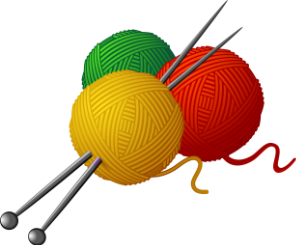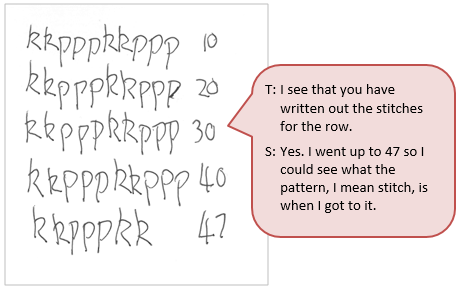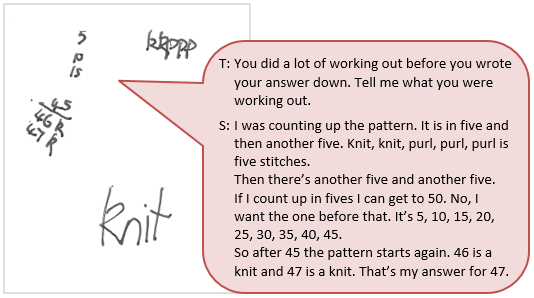The purpose of this activity is to engage students in continuing a sequential pattern and identifying a specific term in that pattern.
This activity assumes the students have experience in the following areas:
- Copying, and continuing, sequential patterns.
- Creating repeating patterns.
The problem is sufficiently open ended to allow the students freedom of choice in their approach. It may be scaffolded with guidance that leads to a solution, and/or the students might be given the opportunity to solve the problem independently.
The example responses at the end of the resource give an indication of the kind of response to expect from students who approach the problem in particular ways.
A knitting pattern gives instructions for a row of 47 stitches as ‘Knit 2, Purl 3 then repeat’.
This means the row will be k k p p p k k p p p k k p p p… for 47 stitches.
What will the last stitch on the row be? A knit or a purl?
The following prompts illustrate how this activity can be structured around the phases of the Mathematics Investigation Cycle.
Make sense
Introduce the problem. Allow students time to read it and discuss in pairs or small groups.
- Do I understand what I need to do? (Find the 47th element of a sequential pattern.)
- Do I understand the words? (“Repeating pattern” may need explanation and students might find an enactment of knitting useful.)
- What will an answer look like?
Plan approach
Discuss ideas about how to solve the problem. Emphasise that, in the planning phase, you want students to say how they would solve the problem, not to actually solve it.
- What strategies will be useful to solve a problem like this? (Trial and error may work but establishing the unit of repeat first is an important strategy.)
- How will I organise my objects or symbols, so it is easy to see my pattern? (Rows of five structure the unit of 5 stitches that repeats.)
- How will I record my pattern? (Encourage students to draw the pattern in some way if they do not attempt to use number patterns.)
Take action
Allow students time to work through their strategy and find a solution to the problem.
- Is my strategy working or do I need to be more orderly?
- What is the pattern? How can I describe the pattern?
- How might I use the way the pattern is organised to save me work?
- Is the working clear so someone else can follow it? Am I sure it is correct? How did I check my working?
- How can I express how the pattern repeats, using diagrams, numbers, and words?
Convince yourself and others
Allow students time to check their answers and then either have them pair share with other groups or ask for volunteers to share their solution with the class.
- What is my answer?
- Is my working clear for someone else to follow?
- How would I convince someone else that my answer is correct?
- Have I used the repeating part of the knitting pattern to justify my answer?
- What is the most efficient strategy? Why is it most efficient?
Examples of work
Work sample 1
The student creates a sequence of letter symbols and continues the pattern until the 47th stitch is found.
Click on the image to enlarge it. Click again to close.
Work sample 2
The student recognises that the unit of repeat is k, k, p, p, p. They skip count in fives to find the nearest complete pattern to 47 (45 stitches). The continue the pattern two stitches to find the 47th stitch.


